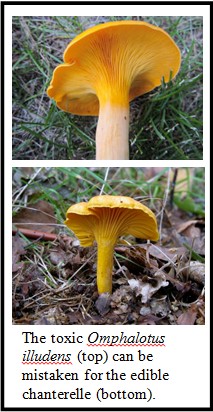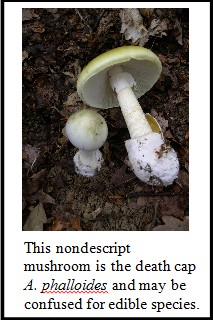The mushroom season has begins in the fall in the Pacific Northwest Region, and as a result, the residents of Washington are at an increased risk of exposure to poisonous mushrooms. The WAPC discourages anyone from ingesting foraged mushrooms unless 100% certain of their identity.
While the majority of mushrooms in Washington are nontoxic, several poisonous species grow throughout the state. The Washington Poison Center is consulted annually for cases of mushroom poisoning following mis-identification of toxic species. Some mushroom species in Washington State can produce severe nausea and vomiting, seizures, kidney and liver damage, and death following ingestion. Symptoms from severe or potentially fatal poisoning may not develop for 6-24 hours following ingestion!
Important things to remember about mushroom foraging:
- Poisonous mushrooms may resemble edible mushrooms, specifically those found in other parts of the country or world.
- Poisonous mushrooms in Washington State may be mistaken for edible mushrooms in other parts of the country or world.
- Cooking mushrooms does not inactivate all toxins.
- There are no easy tests or rules to determine whether an unknown mushroom is poisonous.
- Witnessing animals eating mushrooms does not make them safe. Some toxic mushroom species are edible to certain animals. For example, rabbits can safely eat the death cap mushroom, Amanita phalloides, which causes severe liver poisoning in humans.
- There is no ‘antidote’ for several potentially deadly mushroom toxins.
- Eat only a small portion your first time. Save a sample and if possible, take a photo. This can be used for identification purposes if you become ill later.
- Remember to save a sample of wild mushrooms for identification should you or a family member become ill after ingestion. Keep the mushroom in a paper bag to prevent decomposition of the mushroom sample.
- Never consume mushrooms rotting mushrooms, and do not forage in areas where chemicals may be applied to the ground (for example: golf courses).

- Do not ingest ANY wild mushroom unless you are 100% certain that it is safe to eat.
If you believe that you or a family member has ingested a potentially poisonous mushroom, or if any symptoms develop within 24 hours of eating wild mushrooms, call the Washington Poison Center at 1-800-222-1222. All calls are free, confidential, and answered by healthcare professionals.
